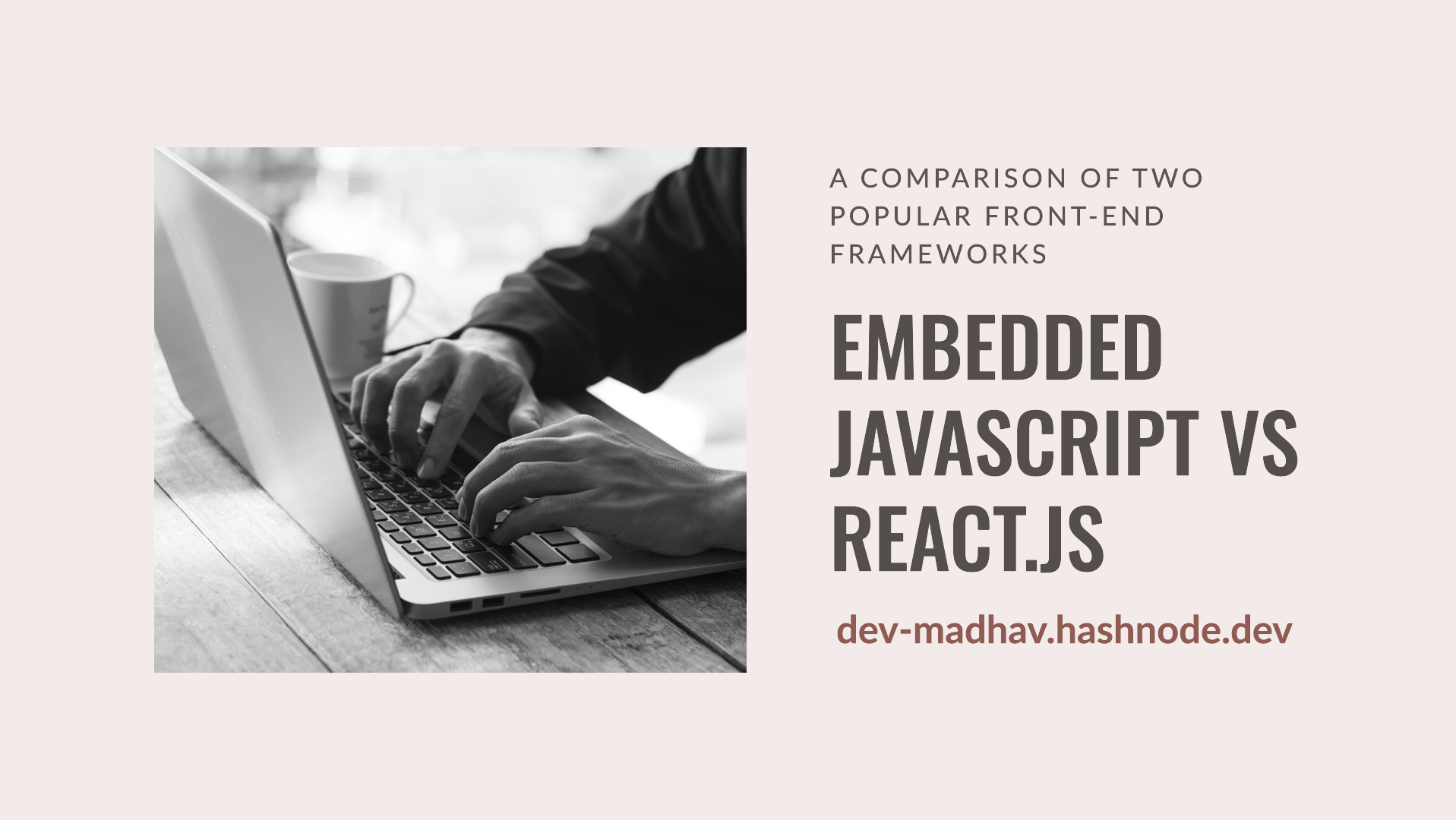EJS v/s React - The Template Battle!
 Madhav Dhobley
Madhav Dhobley
When building web apps, the choice between a template engine like EJS & JavaScript library like React can be complicated. Both offer ways to structure and deliver dynamic content, but they cater to different needs and development styles. In this blog, we'll delve into the core functionalities of EJS and React to help you decide which one is better for your project.
EJS: A Server-Side Templating Script
EJS (Embedded JavaScript) is a lightweight templating engine that simplifies the process of generating HTML on the server-side. It allows you to embed JavaScript code within HTML templates, making them dynamic and data-driven.
Here's what makes EJS stand out:
EJS syntax is easy to learn and understand, making it a great starting point for beginners. You can integrate control flow statements (if/else, for loops) and access server-side data directly.
EJS keeps your HTML and JavaScript code separate, promoting better organization and maintainability.
EJS excels at generating the initial HTML payload on the server. This is beneficial for SEO (Search Engine Optimization) as search engines can easily index your content.
Since EJS generates HTML on the server, the initial client-side load is lighter, which can be advantageous for slower internet connections.
Limitations of EJS:
EJS primarily focuses on server-side rendering. While you can implement basic interactivity with JavaScript, complex user interfaces become cumbersome to manage.
Maintaining application state across user interactions becomes complex with EJS alone. You might need additional libraries to handle state effectively.
As applications grow, managing numerous EJS templates can become filthy.
React: The King of Client-Side UIs
React is a powerful JavaScript library for building dynamic and interactive user interfaces. It adopts a component-based approach, where reusable UI elements are encapsulated with their own logic and state.
Here's what makes React stand out:
Breaking down the UI into reusable components promotes code organization, maintainability, and scalability.
React utilizes a virtual DOM, a lightweight representation of the real DOM. This allows for efficient updates by identifying minimal changes and optimizing re-renders.
React excels at creating dynamic and responsive UIs.
React enforces a unidirectional data flow, making it easier to reason about how data changes and affects the UI.
Drawbacks of React:
React as compared to EJS, requires a deeper understanding of JavaScript concepts and methods.
Building complex applications with React can involve managing state, props, and component lifecycles, increasing development time.
Due to client-side rendering, the initial load time for React applications can be higher compared to server-rendered ones, especially on slower connections.
Choosing between EJS & React
The battle between EJS and React boils down to your project's specific needs:
For basic websites with minimal interactivity, EJS is a great choice due to its simplicity and SEO benefits.
For applications with dynamic content and complex user interactions, React shines with its component-based architecture and efficient rendering.
You can even consider a hybrid approach! Use EJS for server-side rendering of initial content and integrate React components for dynamic UI elements.
Both EJS and React are valuable tools for web development. EJS offers a straightforward way to generate dynamic HTML on the server, while React empowers you to build intricate and interactive user interfaces. By understanding their strengths and limitations, you can make an informed decision that aligns with your project requirements.
I hope this blog clarified your thoughts on EJS & React, & now you can choose the perfect one without any confusion.
Stay tuned for more such informative blogs on the way!
Subscribe to my newsletter
Read articles from Madhav Dhobley directly inside your inbox. Subscribe to the newsletter, and don't miss out.
Written by

Madhav Dhobley
Madhav Dhobley
I am a dedicated React and Node.js developer with a good track record of successfully delivering guided projects in these cutting-edge technologies. My passion for creating dynamic and efficient web applications is evident in my hands-on experience with database management using MySQL and PostgreSQL, ensuring seamless integration and optimal performance.